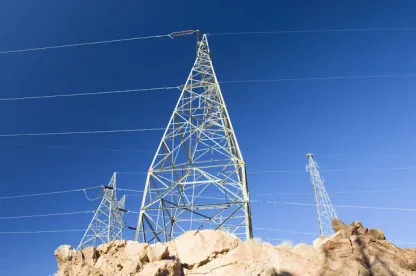On March 21, 2016, the North American Electricity Reliability Corporation (NERC) submitted an informational filing to update the Federal Energy Regulatory Commission (FERC or Commission) on the implementation of the Risk-Based Registration (RBR) initiative—a program NERC launched to reduce unnecessary compliance and registration burdens through the use of risk-based assessments. The filing is an example of NERC’s continued push towards implementing a risk-based approach to reliability and focusing compliance and enforcement efforts on high-risk areas. As reflected in the filing, certain low-risk entities have been dropped from the NERC Compliance Registry, removing the reliability compliance obligations to which those entities were previously subject.
In implementing RBR, NERC intends to ensure that the right entities are subject to the right set of Reliability Standards through the use of a consistent approach to risk assessment and standardization. NERC’s RBR proposal, approved by the Commission in 2015, centered on several registration-related reforms, including the modification of several functional registration categories, the application of sub-set lists of Reliability Standards to qualifying entities that receive such treatment, and other procedural revisions to the registration process.
To update the Commission on those three sets of reforms, NERC’s informational filing reported that
-
it has deregistered and/or deactivated certain registered entities;
-
it has established procedures for a NERC-led Review Panel to examine registered entities’ requests for the application of a sub-set list of compliance obligations, and to review registration-related disputes; and
-
RBR implementation has had no reliability or cost impact to date.
These developments are discussed further below.
NERC’s Informational Filing
Deactivation and/or Deregistration Efforts. NERC reported that, in concert with the Regional Entities, it has deregistered and/or deactivated entities registered as purchasing-selling entities (PSEs), interchange authorities (IAs), and distribution providers (DPs) in the NERC Compliance Registry (NCR). NERC noted that unlike PSEs and IAs, which were eliminated from functional registration categories in the NCR, NERC did not likewise eliminate the DP registration function from the NCR. Instead, entities currently registered as DPs that are between 25 MW and 75 MW must apply for deactivation so that their respective Regional Entities can assess whether the proposed change in registration is consistent with NCR criteria, and if such a change would impact reliability.
NERC-Led Review Panel. To maintain consistency and oversight in registration decisions, NERC established the procedures for a NERC-led Review Panel that will examine registered entity requests for the application of a sub-set list of Reliability Standards and/or requirements for registered functions, as well as disputes regarding the application of certain sections of NCR registration criteria, and publicly post its decisions. NERC also sought to determine whether it could easily group and identify lower-risk entities that would qualify to be subject only to a sub-set list of Reliability Standards. However, NERC found no consistent set of criteria or system characteristics defining such a group or groups, and concluded that future candidates for sub-set lists must apply directly to the Review Panel for a case-by-case determination.
Impacts of RBR to Date. Overall, NERC reported that no reliability impact or material cost impact has resulted from RBR implementation. NERC did not observe any reliability events related to PSE, IA, and DP deregistrations or deactivations since April 20, 2015—the date the Electric Reliability Organization (ERO) started processing deactivations and deregistrations. From a compliance perspective, NERC stated that RBR implementation has reduced the scope of compliance monitoring engagements in the case of entities that have deactivated DP functions, or for entities that have obtained underfrequency load shedding-only registration status. These results should provide further assurances to FERC that there have not been any unintended, negative consequences resulting from RBR implementation—at least to date.





 />i
/>i
